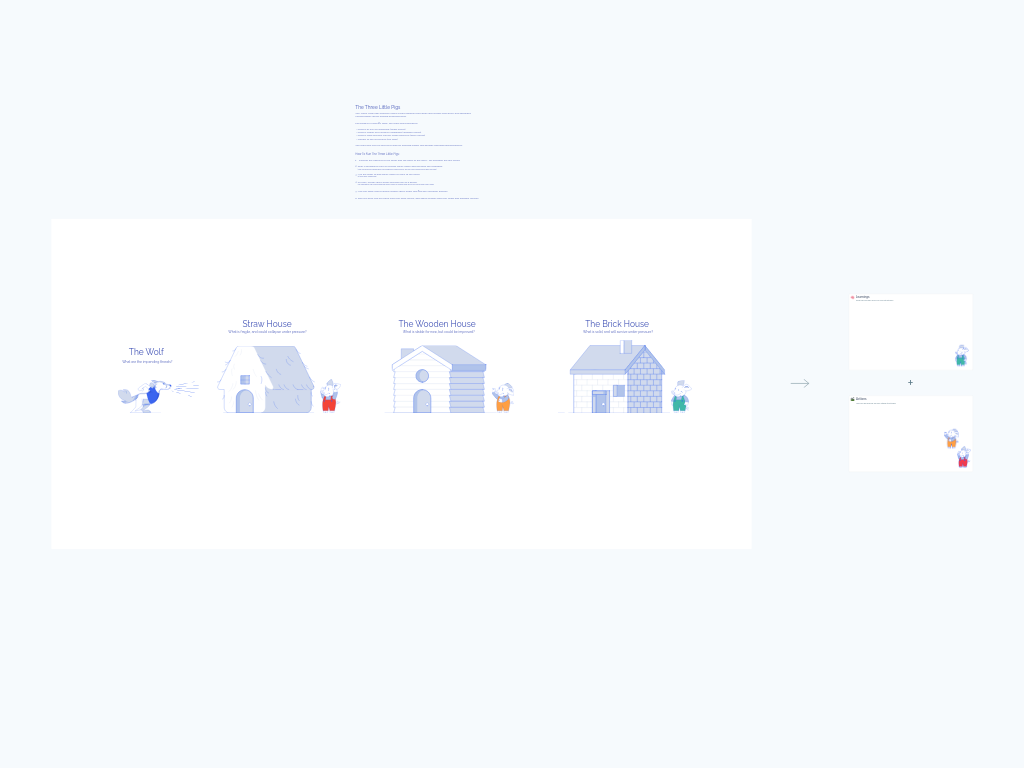Weather Report Retrospective
The Weather Report retrospective is a powerful agile framework that helps development teams reflect on how they navigated through different conditions during their sprint. By comparing planned work to actual outcomes through weather metaphors, teams gain insights into their adaptability, resilience, and opportunities for growth in both challenging and favorable circumstances.
What Is the Weather Report Retrospective?
The Weather Report retrospective uses weather conditions as metaphors to analyze a team's sprint experience. This technique helps teams examine how they responded to different situations - from disruptive "storms" that derailed plans to "sunny" periods that enabled smooth sailing.
The framework creates a safe space for teams to acknowledge challenges while celebrating successes, focusing on both what happened and how the team responded. By visualizing their sprint as weather patterns, teams can better understand their collective response to change and identify patterns in their adaptive behaviors.
Benefits & When to Use
This retrospective format is particularly valuable when:
- Your team has experienced significant disruptions or unexpected changes
- You want to improve your team's adaptability to changing conditions
- Team members need to reflect on their responses to both challenges and opportunities
- You're seeking to build resilience for future unpredictable situations
- Your team needs a balanced view of both difficulties and successes
The Weather Report helps teams recognize that different conditions require different responses, encouraging proactive adaptation rather than simply reacting to circumstances. It's especially useful after sprints with mixed experiences - some smooth sailing and some turbulence.
How to Run a Weather Report Retrospective Session
Preparation Time: 5 minutes
Session Time: 45-60 minutes
Introduction (5 minutes)
- Explain the weather metaphor and how it applies to the team's recent sprint
- Start the meeting to enable private sticky notes
- Emphasize that both challenges and successes are valuable learning opportunities
Weather Conditions Reflection (10-15 minutes)
- Ask the team to add notes to the top row categories:
- Stormy: What was turbulent and completely interrupted plans?
- Rainy: What was interruptive but manageable?
- Changing Weather: Where was there uncertainty?
- Sunny: What turned out to be cheerful and easy?
- Ask the team to add notes to the top row categories:
Group and Discuss Weather Patterns (5-10 minutes)
- Reveal notes and group similar events
- Discuss patterns and ask clarifying questions
- Validate shared experiences without jumping to solutions yet
Response Reflection (10-15 minutes)
- With private notes enabled, ask team members to complete the bottom row:
- Adapting: How did we change our plans when forced to?
- Coping: How did we manage inconveniences?
- Embracing: How did we embrace changes?
- Benefiting: How did we take advantage of good conditions?
- With private notes enabled, ask team members to complete the bottom row:
Analyze Responses (10 minutes)
- Reveal and discuss how the team responded to each condition
- Look for patterns in responses - what approaches worked well?
- Identify missed opportunities or ineffective reactions
Improvement Opportunities (5-10 minutes)
- Focus on key areas where the team could have responded differently
- Prioritize improvement areas that would have the most impact
- Consider both handling challenges better and maximizing opportunities
Action Planning (10 minutes)
- Create specific, actionable experiments to better prepare for similar conditions
- Assign owners to action items
- Set timeframes for implementing changes before the next retrospective
Tips for a Successful Weather Report Session
- Encourage balance between discussing challenges and successes - both provide learning opportunities
- When discussing stormy situations, focus on team responses rather than placing blame
- Look for weather patterns that repeat across sprints - these highlight systemic issues
- Pay special attention to the "Changing Weather" category, as uncertainty often reveals opportunities for process improvements
- Consider having team members individually map their "personal weather" before sharing with the group
- For remote teams, use the timer function to keep timeboxes clear and maintain momentum
- If certain weather conditions are dominating discussions, consider running a follow-up deep-dive session
- Remember that "Sunny" conditions can sometimes mask inefficiencies or missed growth opportunities
By regularly using the Weather Report retrospective, teams develop greater awareness of their response patterns and build adaptive capabilities that make them more resilient when facing future storms or opportunities in their development work.



